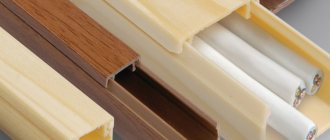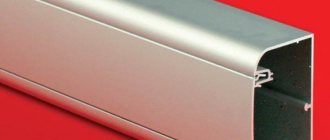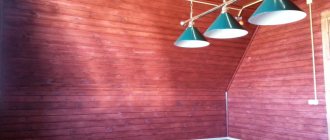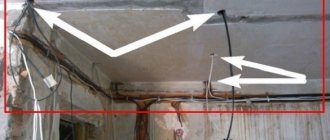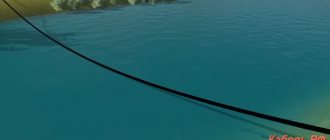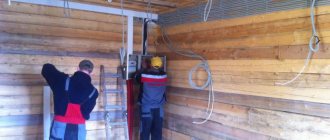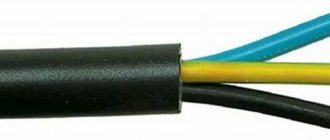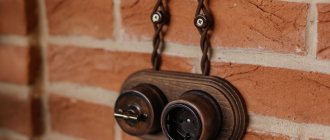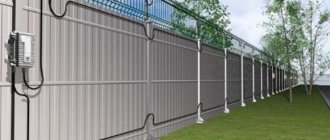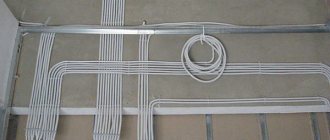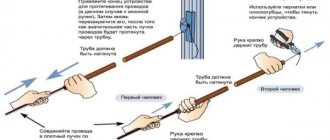Types of boxes and characteristics
The construction goods market offers cable ducts of various designs.
Leading manufacturers produce the following products:
- floor;
- perforated;
- flexible;
- main lines;
- transparent;
- staircases;
- mini cables;
- parapet;
- baseboards;
- corner;
- wire;
Products are made of aluminum, steel, and plastic:
- Today, plastic cable channels are the most popular, as they have excellent characteristics. These models are often installed outdoors.
- Aluminum models are characterized by excellent fire performance. Therefore, they are used in enterprises and factories:
- flexibility;
- moisture resistance;
- strength;
- softness;
- Steel products can boast a variety of colors. High-quality galvanized steel has a special coating that prevents corrosion. Steel products have a long service life. The perforated base makes installation easy.
The most popular plastic channels are:
- Floor-standing. The special design allows you to install channels in hard-to-reach places. The oval shape reliably protects cables from mechanical damage. The models also have a beautiful appearance.
- Skirting. These models are used in apartments and private houses. A significant advantage is the special shape of the channels, which fits perfectly into any interior.
- Parapet. As a rule, such channels are installed in offices and enterprises. Most often they are used to protect wires from air conditioners and other devices. The design of the channels has strict shapes and correct geometry.
Depending on the color of the plastic channels, there are:
- light;
- white;
- colored;
- under dark and light wood;
Today, wooden trays are the most popular. In offices, as a rule, PVC ducts are used. Modern areas of application of specialized channels are very diverse. This is due to the wide range of accessories for its installation:
- plugs;
- connecting corners;
- T-shaped corners;
- L-shaped corners;
- external and internal;
Today, a large number of companies are engaged in the manufacture and sale of specialized boxes. The most famous of them are:
- DKC;
- OMiS;
- ASKO;
- Teko;
- IEC;
- Moll;
- Legrand;
- Replast;
- ELEKOR;
The main advantages of modern cable channels are the double lock, which combines flexibility and elasticity, as well as the strength of the connection. The material itself is plastic, which is self-extinguishing. It allows installation of cables up to 1 thousand volts.
Also, there are mini cables on the market that differ in their shape. These devices have rounded corners and a special lid fastening mechanism, which creates the illusion of a monolithic structure and covers all seams, which is especially valuable for office aesthetes. In addition, the device is flexible and durable.
Modern models do not require post-installation cleaning. Since after installation the cable cover completely covers the base itself.
High-quality cables have the following advantages:
- Rostest certificate.
- Increased level of dust and moisture protection.
- Can be installed both indoors and outdoors.
The main parameter when choosing specialized boxes is the cross-section of the conductor. If you have an Internet cable, the most suitable one is a mini-model measuring 10 by 15 millimeters, which fits perfectly into the ergonomics of the apartment.
This model has the following advantages:
- Rounded shape.
- Aesthetic appearance.
- Made from environmentally friendly materials.
Advantages of using cable channels
The use of plastic electrical trays has its advantages and disadvantages.
Advantages:
- minimum weight;
- the lowest price compared to metal or wooden products;
- do not corrode and are resistant to fungi, bacteria and rodents;
- can be used in rooms with high humidity and sudden temperature changes;
- easy installation and dismantling;
- ease of care;
- fireproof;
- are an additional electrical insulator for wiring;
- are available in various colors.
Flaws:
- more fragile compared to metal or wooden products;
- have a less presentable appearance;
- have a shorter service life.
Application of plastic boxes
Most often, plastic channels are used in everyday life. They have the following positive qualities:
- Low cost. It is associated with the low price of the manufacturing material itself - plastic, and the simplicity of the production process.
- Mass production of plastic products due to the development of modern technologies.
- Resistance to the negative effects of moisture, fire, acids, fungi, mold.
- Resistant to mechanical stress.
- Non-conductivity of electric current.
- Possibility of use in conditions of high humidity.
- Easy to connect and pull wires.
- No special tool required.
- A wide range of colors, thanks to which the box can organically fit into the color design of the room.
Despite the large selection of colors, you should understand that the plastic box will still be noticeable on the wall. For this reason, you also need to think in advance about how to lay plastic boxes for electrical wiring so that they do not spoil the appearance of the room.
Advantages of an electrical box
The main advantages of placing wiring in a cable channel are as follows:
- ease of installation work;
- mobility;
- availability of communications for modernization or repair;
- Possibility of installation in well-finished rooms. The electrical network, packaged in a box, has a completely acceptable aesthetic appearance;
- scalability. If you correctly calculate the size of the box, there is always the possibility of laying additional cables and wires if the need arises in the future.
Due to the flexibility of the installation process, the technology of using electrical boxes has become widespread in both the industrial and residential sectors. If any problems occur, the suspicious section of the cable network can be easily opened to eliminate the problem.
Among other things, plastic boxes have a low cost and significantly reduce the risk of mechanical damage to wiring. They reliably protect power lines from open contact with a person for whom electric current poses a danger.
Cable channel design
Any plastic wiring box has the following structural components: a base and a cover.
The base is usually U-shaped and is designed to fix the profile to the building structure. All the wires that need to be placed in the product are located in the base. Some models are sold with mounting holes already prepared. If there are no holes, or their number is not enough, then they are made independently using a drill. The holes are located along the entire length of the tray in increments of 30-50 cm.
The base also contains partitions to separate cables from each other and latches to secure the cover. The lid can be flat or rounded.
To connect the trays to each other, special adapters or couplings are used.
PVC channels are manufactured in flexible and rigid types. When producing the hard version, additional mineral additives are added to the plastic.
To accommodate several wires going to different consumers, multi-section trays are used. They contain partitions that divide the internal space into separate sections. In addition, multi-section trays, compared to single-section options, have greater rigidity due to partitions.
The boxes have certain geometric dimensions, depending on the type, number of sections, design features of the model, etc.
Cambrics
These are a kind of covers - flexible hoses made of PVC or polypropylene, which are placed on the cable on top of the sheath or insulation. The cambric is used to give the cable a more aesthetic appearance and additional protection or when it is necessary to combine several wires together.
Cable routing products provide the following mounting options. The cable channel is attached using the most common dowel-nails measuring 6 x 40.
Plastic clamp
If the partition material is wood or soft plastic, you can screw the cable channel with screws or simply glue it. Metal trays are secured using anchor clamps, dowel-nails and bolted connections. It will not be possible to glue the trays. In addition, special shelves and brackets are sometimes required to secure them.
Corrugated plastic and PVC pipes are mounted using special clips, which, in turn, are attached to the ceilings using screws or dowel nails. Using this type of fastener is extremely convenient; installation of a ready-to-use pipe is carried out with one movement of the hand. It is very easy to remove the pipe back. The metal bracket is used for fastening metal hoses, corrugations and PVC pipes. This is a more secure mount than a clip.
A plastic clamp or tie is used in cases where pipes need to be secured quickly. In addition, this is a very cheap and simple method.
These articles may also be of interest to you:
- Wire connection methods
- Wire routing
- Replacing the mixer axle box gasket
- Soldering copper pipes. Soldering restoration
Dimensions
Modern technologies make it possible to produce specialized boxes of various sizes and designs:
- polygonal;
- triangular;
- and others;
The length of the product in the package is:
- 15 m;
- 16 m;
- 20 m;
- 42 m.
- 70 m.
- 100 m.
Section:
- 12×12;
- 16×16;
- 20×10;
- 40×16;
- 60×40;
- 80×40;
- 100×60 and others;
Of course, the construction market offers standard devices that have average characteristics.
The most popular are square-shaped plastic covers, which are used to protect various cables.
These devices have different sizes and characteristics. Installation of products is carried out in 2 ways. Thanks to special latches, installation of the box is carried out in the shortest possible time. In order to choose a model, you need to take into account the number of wires. Since the size of the device will depend on this.
The most common sizes of specialized boxes:
- 80×60;
- 60×40;
- 40×16;
- 25×16;
- 12×12;
- 100×60;
- 80×40;
- 40×25;
- 25×25;
- 16×16;
The most common cables are 100*60 and 12*12. Various couplings are used to connect boxes. As a rule, models are sold in the form of planks (2 meters). All plastic models are attached in a standard way.
Using a screwdriver, the device is screwed to the surface. All additional components and accessories must be purchased separately.
Taking into account the cable width
The box must be free enough to lay the wire. The small cross-section will not allow the lid to close tightly. A tightly laid wire will overheat.
Dimensions of electrical installation cable channels in cross section
Mini-channels are produced by industry with the following typical cross-sectional dimensions:
- 10x10mm;
- 10x12mm;
- 12x12mm;
- 12x16mm;
- 16x16mm;
- 16x20mm;
- 20x20mm;
- 20x25mm;
- 25x25mm;
- 25x40mm;
- 40x40mm;
- 40x60mm;
- 60x80mm.
Trays of this type are designed to accommodate one or two wires.
Floor boxes are produced with the following cross-section:
- 160x65mm;
- 50x12mm;
- 92x20mm;
- 75x17mm.
Trunk plastic boxes for electrical wiring have the following typical cross-sectional dimensions:
- 20x10mm;
- 30x10mm;
- 40x25mm;
- 25x25mm;
- 40x40mm;
- 40x16mm;
- 80x60mm;
- 100x60mm.
For the plinth type, the size is determined by the width of the cover (diagonal wall) and is usually made 50 or 70 mm. You can also find the sizes of skirting boards with cable channels, which are given according to the height and width of the base. In this case, the most popular are 50x50 mm skirting boards. They allow you to place several wires in one product. Trays measuring 100x100 are designed to accommodate three-wire wires.
Dimensions for corner structures depend on the dimensions of the internal part of the product. The most popular size is 40x40 mm.
Depending on the purpose, flexible corrugated models are available in the following diameters: 16mm; 20mm; 25mm and 50mm.
- 16mm pipes are used for laying lighting and telephone cables;
- to create outlets for sockets or switches, use 20mm corrugated channels;
- Corrugated cable ducts with a pipe diameter of 25 mm are used between electrical panels or distribution boxes.
The industry also produces cable channels designed to accommodate LED strips; they are produced in widths from 5 to 20 mm. In addition, LED channels can be located in plinth boxes.
Skirting electrical installation tray with LED channel
Wall thickness of plastic cable channels
Depending on the size of the trays, products with different wall thicknesses are produced. The strength and flexibility of the box depends on its value.
Small mini-channels are made with a wall thickness of 0.7 mm. Medium-sized boxes (from 20 to 40 mm wide) have a thickness of about 1.3 mm. Wide main profiles (from 60 to 100mm) are manufactured with a thickness of 2.4mm.
In addition to boxes of standard sizes, many companies produce custom-made products made to customer sizes.
Plastic cable channels, their types and sizes
Most often, plastic types of cable channels are used for laying information cables in offices and, if necessary, to make open or temporary wiring - in this case, power cables and wires for lighting lines are also laid in them.
Shape, materials and dimensions
Initially, these were white or gray profiles, rectangular in cross-section in the shape of the letter “P” (single-section) or “W” (two or more sections). Then they began to produce cable channels of various shapes and colors, intended for laying cables for various purposes.
Triangular cable channels or in the shape of a hemisphere appeared - it became more convenient to use them for wires for various purposes, depending on the purpose of the room, the materials used in its decoration and the need for free access to the cables hidden inside.
- U-shaped cable channel.
- Triangular cable channel.
- Sh-shaped cable channel.
- Cable channel in the form of a hemisphere.
For the production of cable channels, non-flammable PVC or polyethylene is used. The length of one section is usually 2 meters, but manufacturers may use other standards, so longer cable channels can be found if necessary. The cross-sectional width and height range from 10 to 60 mm, but there may be exceptions here.
The most popular are U-shaped cable channels. U-shaped cable channels can be made with solid or perforated walls. Their advantages include lower weight and lower price.
Dimensions of U-shaped cable channels and their useful cross-section:
| Profile | Size (width × height), mm | Useful cross-section, mm² | Wall thickness, mm |
| 12x12 | 130 | 1 | |
| 15x10 | 135 | 1 | |
| 16x16 | 230 | 1 | |
| 20x10 | 180 | 1 | |
| 25x16 | 360 | 1,1 | |
| 25x25 | 563 | 1,1 | |
| 40x16 | 576 | 1,3 | |
| 40x25 | 900 | 1,3 | |
| 40x40 | 1440 | 1,3 | |
| 60x40 | 2160 | 1,7 | |
| 60x60 | 3240 | 1,7 | |
| 80x40 | 2880 | 1,7 | |
| 80x60 | 4320 | 1,7 | |
| 100x40 | 3600 | 2 | |
| 100x60 | 5400 | 2 |
*The useful cross-section of cable channels from some manufacturers may differ from that shown in the table.
Surface attachment method
Depending on the material of the surface on which the cable channel needs to be secured, collapsible and non-removable fasteners are used. The first include dowel-nails (6Ch40), metal staples or self-tapping screws - for them, holes are cut in some cable channels from the factory. Permanent fasteners are used on plasters and similar materials - cable channels are simply glued to them (although here the weight of the box with wires must be taken into account).
Purpose
Mounting boxes are used when creating local electrical networks and for laying cable routes. The design of the main cable channels ensures professional laying of wires for various purposes:
- electrical wiring to supply power to electrical equipment;
- telephone cables;
- fiber optic and other wiring used in information network communications;
- CCTV, alarm and fire safety lines.
Due to the versatility of electrical boxes, they are increasingly used not only in new buildings, but are also widely used in cases where it is necessary to replace outdated electrical wiring laid in plaster. These are convenient designs for arranging new communication networks. For an example of using the products, see Fig. 1.
Rice. 1. Example of using floor and baseboard cable ducts
Thanks to free access to the cable tray wiring, it can be visually inspected for damage at any time. If necessary, a damaged cable can be easily replaced or a new wire can simply be added on top of the existing ones. This feature greatly simplifies the maintenance of power supply networks in premises, maintenance of telephone cables, repair or creation of branches for the equipment of new points of electronic nodes.
The advantages of cable boxes undoubtedly include:
- high level of safety throughout the entire service life;
- simple and convenient installation (see Fig. 2.), both of the main boxes themselves and of the wiring in their channels;
- reliable protection of wires from accidental mechanical damage;
- restricting unauthorized access to installed wiring;
- aesthetic appeal of parapet boxes, enhanced by decorative elements.
Rice.
2. Installation diagram of a parapet box The safety of cable channels is ensured by the properties of modern materials used in the production of plastic boxes. A wide range of sizes and design features of the products allows for installation of electrical wiring that uses different cable diameters.
Metal boxes - types and sizes
Since metal trays and boxes are designed for heavy loads, the need to use them in domestic conditions arises quite rarely. The types and sizes of metal cable ducts are mainly suitable for external and internal laying of cables in industrial premises where there are highways consisting of a large number of wires. To prevent the material of the boxes from rusting, galvanized steel is used in their production. Like plastic ones, the cross-section of metal cable channels is U-shaped - with or without a cover.
Depending on the conditions of use, perforated, smooth and ladder trays are manufactured. The former are easier to install and secure cables inside, while the latter are heavier and are installed on special supports.
Cable tray sizes:
| Dimensions (width × height × length), mm | Metal thickness, mm | Useful cross-sectional area, cm² |
| 50×50×2500 | 0,55 | 24,22 |
| 100×50×2500 | 0,55 | 48,44 |
| 200×50×2500 | 0,7 | 98,44 |
| 300×50×2500 | 0,7 | 147,44 |
| 400×50×2500 | 1,0 | 198,44 |
Due to their heavy weight, gluing metal boxes is not practiced - they are attached to the surface with anchors, dowels, or “mounted” on a bolted connection. To install smooth trays, shelves or brackets pre-fixed to the surface are used.
Most often, metal boxes are used to form electrical lines in raised floors or suspended ceilings. For their installation, additional blocks are used - rotating, lifting (for transferring wires between planes), branching, etc.
Advantages of metal cable channels:
- Withstands the weight of a large number of power cables.
- They allow you to easily trace the route of any cable, provide ease of installation and easy access for inspection or replacement.
- An additional plus for fire safety.
Disadvantages of metal cable channels:
- Greater weight requires more serious installation work.
- It is more difficult to process during installation (if cutting is required).
- These types of cable channels for electrical wiring necessarily require additional components for the installation of turns and transitions.
Assortment within the group of building materials
To choose the right cable channel, you need to find out what sizes and design are available. The location of a particular box or sleeve, the permissible number and cross-section of conductors depend on this. The material has different strengths and resistance to different operating conditions. Let us consider in more detail each criterion and the corresponding types of building materials.
What is the channel made of?
The leading position here is held by metal and plastic. The first one is more often considered for installation on large objects where communications are visually hidden. The latter are relevant for the private sector, social, administrative and public institutions.
Ceramic products fit well into retro-inspired designs, but are expensive and heavy. Compared to their analogues, they are less practical due to their fragility.
Plastic
This is the most popular option due to its wide range, light weight and low cost. The materials used for production are polyvinyl chloride, plastic and other polymer products with special functional additives.
Plastic channel with a triangular cross-section Source lampadia.ru
Finished products must meet the following requirements:
- low coefficient of thermal expansion;
- resistance to mechanical load;
- inertness to biological activity and chemical reagents (household detergents or aggressive indoor environment);
- fire resistance (but in rooms with explosive and flammable substances it is not recommended for use due to the release of toxic melting products);
- preservation of color and shape under the influence of ultraviolet radiation.
Various types of products are easily formed from polymer raw materials, which makes it possible to produce cable channels for electrical wiring in a wide range. This applies to shape, color, design (perforation, cast longitudinal partitions and stiffeners).
Sample with perforated walls Source cdnmedia.220-volt.ru
The products can be used as wall, ceiling and floor cable ducts, decorative and architectural elements, separators for conductive lines for various purposes and power (power, low-current).
In addition to weight and price tag, the advantages of such solutions include:
- wide range of operating temperatures (from -32 to +90 degrees Celsius);
- inertness to various types of corrosion processes;
- simple installation (it is permissible to use self-tapping screws, metal or plastic brackets, glue or double-sided tape);
- cutting is carried out using improvised tools (construction knife, hacksaw, hot metal blade);
- minimal care (moistened and dry wipe, coloring possible if desired).
The cover for the plastic cable channel is made with longitudinal edges that are shaped like a groove. They are put on the reciprocal “spikes” of the tray. It is permissible to remove the strip and close the box multiple times.
A simple double lock for closing the box Source planeta-electro.com
See also: Catalog of companies that specialize in electrical work of any complexity
Metal
This material has three main advantages: mechanically high strength, resistance to aggressive operating conditions, fire resistance (plus there are no emissions harmful to health when heated). These characteristics of the cable channel expand the scope of application including outdoor installation. For the production of engineering trays, various types of galvanized steel and anodized aluminum are used. Here the product requirements include the following:
- resistance to phenomena that provoke corrosion processes;
- endurance to designed loads (mechanical, temperature, humidity, chemical);
- non-conductivity of electromagnetic rays (relevant for communication devices for warning and video surveillance systems).
For the most part, metal trays are made with a cross-section in the shape of a square or rectangle. Solid channels are used for installation on a combustible base. In other cases, experts give preference to products with perforations for fasteners or natural air circulation.
Metal cable tray with perforation Source yandex.net
The lid, similar to the box, is made with curved longitudinal edges. Closing is carried out by snapping the strip onto the walls of the tray. The procedure can be performed many times, which allows you to operate cable channels for electrical wiring longer than plastic counterparts. This is justified by the ability of polymer products to wear out, crack and deform.
The table presents a comparative description of polymer and metal samples according to basic criteria.
| Criterion | Aluminum | Steel | Polymer |
| Variety of sizes | + | + | + |
| Accessories | + | + | + |
| Laying different conductors | + | + | + |
| Pulling highways | + | + | + |
| Box | + | + | + |
| Corrugation | — | + | + |
| For production | + | + | — |
| For social facilities | + | — | + |
Since the weight of the metal is relatively large, to fix them you need to use hardware, anchors, dowels or special brackets. This fact conventionally refers to the disadvantages of metal structures. But the complexity here is limited to the use of a drilling tool.
Product design
Electrical wiring lines are placed based on building codes and regulations, taking into account the convenient location of sockets with switches. Points can be mounted on walls, ceilings, floors in any part of the plane. Each of the options involves ensuring the protection of communications, free access to conductors, and the safe movement of people and pets. In pursuit of these and other tasks, manufacturers offer for consideration a variety of types of cable channels for electrical wiring according to the type of design solution. The advantages and disadvantages of the main options are discussed in the table.
| Form | Advantages | Flaws |
| Box | Strict geometry with right angles, it is possible to install longitudinal partitions, and can be easily installed almost anywhere. They are available in cross section: square, rectangular, triangular. | Due to the rigidity of the tray, it is difficult to ensure a tight fit of the channel on a curved base (plane or angle). The decorative component is limited by the size of metal or plastic cable channels, color or pattern. |
| Corrugation | The flexible circular channel allows lines to be laid inside and on top of structures in any conditions regarding levelness and access. Conductor replacement is carried out using a metal rod in a short time without dismantling walls, floors or wire ducts. Fastening is carried out using plumbing clips, clamps or ties without compromising the integrity of the sleeve. | There is no cover, which eliminates the possibility of inspecting or replacing the wiring in a separate area without cutting the corrugation. |
| Parapet | Here, manufacturers combined two types of cable channels: ducts and plinths. They are installed at a height of 80-100 cm from the floor, the space allows you to place several conductors. The trays fit well into the interior of medical, public and office institutions. | Narrow boxes have a large width, which is difficult to combine with home design (with the exception of the Loft style). |
| Pipe | Technically, the products are similar to conventional plumbing pipes for sewerage installations. They are easy to disguise against the background of other pipe communications, mounted at a distance from the base, they weigh little and are easy to install. | The disadvantages boil down to the need to disassemble the channels to perform local wiring repairs. It is difficult to completely replace lines with a large number of turns. The system is assembled using component connectors. |
| Skirting | The products perform two main tasks: masking current-carrying conductors and the installation joint between walls and floor coverings. As a rule, the TV cable and Internet conductor are placed here. The range is presented in various colors and patterns. | For a cable channel, products are considered expensive, but this is compensated by their functionality. The main disadvantage can be considered the small usable space. |
| Threshold | Here the lid is made in the shape of a hemisphere, which completely covers the cable channel. This allows the products to be used as thresholds, making it impossible to trip over them. | Depending on the degree of cross-country ability, it is necessary to pay attention to the mechanical strength of the product (reinforced plastic with stiffeners or aluminum). |
| Net | This is the most inexpensive option that does not require cleaning and is attached in any convenient way. Steel wire is used for production. It does not attract dust, is resistant to high mechanical loads, is not afraid of moisture and weighs little. The cellular design provides natural ventilation and open access to check the network at any time. | It is not relevant for home interiors due to the lack of decorative components and transparency. There is no protective function against temperature and humidity changes. |
| Ladder | Reinforced version of cable channels. It is made of a metal profile with different sections with a U-shape. Used for pulling power cables and a large number of lines. | It weighs more than other samples, does not have a cover, and does not protect current-carrying lines from environmental conditions. |
Several more varieties are considered separately. Box-type mini channels are compact and can accommodate one conductor of small cross-section. The smallest size of such a cable channel is 12*7 mm. Flexible, rectangular rigid plates are used to protect wires that are laid on the floor and uneven surfaces. With transparent covers, products are used to mask and protect both conductive lines and LED-illuminated strips.
Samples with translucent lid Source myshoptet.com
Corrugated plastic pipes
If cable channels, plastic or metal, are more suitable for flat surfaces, then in the case of frequent transitions between planes or turns, their installation will be extremely difficult due to the need to use a large number of additional components. In such conditions, a more suitable material would be flexible pipes that bend at any angle and are attached along the entire length to standard clips.
Externally, a corrugated plastic pipe looks like an elastic channel with a circular cross-section. It is used for laying any cables and wires, providing them with additional protection from moisture and mechanical damage. Mainly used when installing electrical circuits with complex wire routing paths - raised floors, suspended ceilings, electrical wiring behind plasterboard walls.
Briefly about open installation of power supply
External installation of electrical networks today is performed less often than hidden installations. This is explained by the use of modern durable materials and aesthetic considerations.
Combining retro wiring and cable ducts with open installation Source izhevsk.ru
However, open installation also has its advantages:
- work is completed faster;
- walls, floors and ceilings remain intact;
- no tool required to form grooves;
- it is possible to carry out repairs or make any changes without destroying the finish;
- monitoring the condition of the electrical network and timely detection of faults is easier than with hidden wiring.
In addition to the unattractiveness of the open arrangement of wires that attract attention, the disadvantages include the need to comply with fire safety and technical standards. Here, the optimal solution is cable channels in one design or another. You can resort to a retro style, but then the estimate will be increased due to the need to use special network insulating products.
Ceramic bushing for twisted wiring Source svetotehnica.ru
Dimensions and components
PVC is used for the production of corrugated plastic pipes. Most often, products with an internal diameter from 16 to 32 mm are used, but when choosing, you must additionally pay attention to the purpose of the corrugation - it can be light or heavy.
The first are standard products that are used for installing electrical circuit lines inside buildings. Heavy corrugations provide more solid protection and can be used outdoors, and in some cases, under water.
Since in long highways it is not always possible to push a wire through a pipe without auxiliary parts, additional corrugations can be equipped with probes made of metal single-core “steel”, however, installers usually have their own.
Dimensions of corrugated pipes for cable:
| Kinds | Outer diameter, mm | Inner diameter, mm |
| Corrugated PVC pipe without probe | 16 | 10,7 |
| 20 | 14,1 | |
| 25 | 18,3 | |
| 32 | 24,3 | |
| 40 | 31,2 | |
| 50 | 39,6 | |
| 63 | 5,6 | |
| Corrugated PVC pipe with probe | 16 | 10,7 |
| 20 | 14,1 | |
| 25 | 18,3 | |
| 32 | 24,3 | |
| 40 | 31,2 | |
| 50 | 39,6 | |
| 63 | 50,6 |
Advantages of plastic corrugated pipes:
- Indispensable for laying wires on uneven surfaces or when it is necessary to make frequent turns in the highway.
- Usually sealed along the entire length, therefore they reliably protect the wires from high humidity.
- Additional protection of cables from mechanical damage and people from electric shock.
- Clip-on mounting is one of the easiest to install and maintain - you can insert or remove the corrugation from them without additional tools.
- In addition to fire safety, the plastic from which the corrugation is made contains additives that prevent combustion. When the wiring is shorted, the corrugation will not flare up, but will simply melt.
Disadvantages of plastic corrugated pipes:
- They do not tolerate negative temperatures well - when overcooled, they lose elasticity and break, so they are more suitable for interior work.
- If there are too many turns and bends, pulling the cable inside the corrugation will be very difficult and sometimes impossible, so you will have to first pull the wires inside and then carry out the general installation.
Smooth hard pipes
The second name is PVC pipes. This is a rigid version of a plastic pipe. As the name implies, such pipes are made from flame retardant polyvinyl chloride. Serve to protect and lay wires. They can be embedded in plaster, concrete floors, etc. This is extremely convenient, since the wires are hidden, and it is very easy to remove them for repair and replacement - just pull them out. PVC pipes are fireproof and protect against electric shock. Since they do not bend, numerous accessories are used for turning and spreading: tees, turning angles, couplings and plugs.
Calculation of the size of a plastic box for electrical wiring
Before you purchase cable channels for installing electrical wiring, you must first draw a layout diagram of the structure in the room, indicating the type of cable channels and the length of each section. After this, determine the required size of each type of tray. To calculate the size of the box, you need to know the cross-section of the wires and their number.
Attention! It is recommended to take a cable channel with a small margin in length (10%) and width.
The length reserve takes into account the additional costs that arise during installation in places with corners, as well as in the event of material damage. It is also advisable to have free space inside the box, which may be needed when laying additional electrical cables.
There is no need to purchase a wide tray if you initially plan to lay only one cable, since its price also depends on the width of the product. Usually the calculation is carried out taking into account an increase in the number of wires by 2-3 pieces.
Also, taking into account the “Rules for Electrical Installations”, in the case of multi-layer filling of plastic cable channels, the sum of the cross-sections of all conductors located in them should not exceed 40% of the cross-section of the product itself in the case of using a box with a lid or 30% in the case of a blind box.
Installation features
Before installation, take into account possible joints, irregularities and the use of additional elements. Therefore, the wiring plan is drawn up in advance. After purchasing all the components, installation begins.
Plastic products are installed in three ways:
- Adhesive base. High reliability, ease of use. Before application, clean the inside of the canal.
- Double sided tape. It is easier to use than glue, but the level of reliability is lower. It is used in places where there will be minimal load. Convenient for light triangular cable channels.
- Self-tapping screws. The method is highly reliable. Used for installation on a wooden surface.
Products made of galvanized steel and aluminum are installed on self-tapping screws. Suspended cable channels must be well secured.
There is a wire rule - cable channels are installed horizontally and vertically. The only exception is stairs - inclined installation is possible.
If two parts of the box are joined, it is necessary to position the lid correctly. The joints between the body and the cover must not coincide. Otherwise, the unevenness will be obvious. For example, a vertical cable channel with a joint above the floor will be clearly visible.
Calculations, drawing up a wiring diagram, selecting a box and installation work require a serious approach. Properly installed electrical wiring will protect your home.
Table for calculating the minimum dimensions of cable channels
| Wire cross-section, mm² | Design and dimensions (height and width, mm) of the box | ||||||||||
| single-section | two-section | three-section | |||||||||
| 10x22 | 10x30 | 10x22 | 10x30 | 15x54 | 10x40 | ||||||
| number of wires in one section | |||||||||||
| 1,5 | 10 | 12 | 3 | 3 | 5 | 5 | 19 | 13 | 5 | 4 | 5 |
| 2,5 | 7 | 10 | 2 | 2 | 3 | 3 | 13 | 13 | 3 | 3 | 3 |
| 4 | 4 | 8 | 1 | 1 | 2 | 2 | 10 | 13 | 2 | 2 | 2 |
| 6 | 2 | 3 | 1 | 1 | 1 | 1 | 5 | 5 | 1 | 1 | 1 |
Cable channels are delivered to hardware stores in packages. Depending on the size of the trays, the packaging differs in the number of products and, accordingly, in the total footage. To calculate the total length of cable channels in a package, the number of products is multiplied by the standard length of one tray (2 m).
A table of parameters for one package, depending on the size of one box, is shown in the figure.
Parameters of one package of electrical boxes, depending on their size
On a note. When purchasing boxes, it is advisable to purchase fittings for them (plugs, corners, branches, etc.).
Also, for household purposes, it is better to purchase single-lock products, as they will last longer than double-lock ones. This is due to the fact that the wall thickness of single-lock structures is greater, and, consequently, the products themselves are more durable.
Correctly sized cable channels will allow you to quickly install the system, and the additional space inside the box will make it possible to easily add wires to the system without the use of additional trays.
Design and colors
Appearance is an important issue before purchasing. The boxes go well with many designs. Manufacturers produce products in several colors. But this issue is resolved only after taking into account the types and sizes of cable channels.
Color options:
- white;
- bright hues;
- colored;
- colors like light and dark wood.
A suitable decorative cable channel for external wiring is selected based on other parameters.
Methods of using cable channels for laying open electrical wiring
A wide range of components for electrical wiring allows you to implement the most complex projects. Installation of the wall box is carried out taking into account the height of the sockets, junction boxes and switches. For open spaces, designs of wall and floor cable ducts made of metal are used. This provides protection from the effects of electromagnetic vibrations. Such options are relevant when installing information wiring.
Before proceeding with installation, it is worth understanding the basic elements of the electrical circuit.
Installation of a floor skirting box
Installation of wiring in the channels is carried out after completion of finishing work. Markings for the cable mesh are marked on the walls. Laying is done from the distribution panel. First of all, main lines are installed, and then branches from them. If the channels do not have holes, you can make them yourself.
Installation of a wall channel with wires. The channel section is fixed to the wall. In this case, the line should be positioned in the center of the holes. After this, fastening with dowels is carried out. After installing the connecting parts, the box is cut to the required length.
Wall Channel Installation
- floor plinth with separate sections for low-current wires;
- ceiling material;
- designs of cable ducts on the floor with protection from mechanical impact;
- corrugated pipes and trays used in utility rooms or for external facades.
Outdoor cable channels are used for the local area. Flexible structures can be used for the street.
Installation of wall boxes is carried out using self-tapping screws. They should be installed at certain intervals. The load is determined by the number of wires inside. To fix it on a wooden surface or on drywall, it is necessary to screw it in every 40-50 cm. If the walls are uneven, then the distance may be less to hide flaws.
To work with a brick or concrete wall, installation is carried out using dowels. To work, you will need a hammer drill with a nozzle with a diameter of 6 mm. The simplest fastening option is liquid nails, which are construction adhesive.
Floor channels will allow you to disguise any wiring so as not to spoil the interior. In this case, the structure is combined with the baseboard. Before installation, markings should be made on the walls and floor. Interestingly, plastic cable channels are mounted not to the floor, but to the wall. Installation is carried out using screws, liquid nails and dowels.
Angled cable channel
Used for mounting LED strip lighting. Most often, such products are made of aluminum, and the lid is made of heat-resistant plastic. The corner cable channel is used to fill the junction of the main line in the corners.
For the home, a flexible cable channel for wires is often used. Lightweight metal models are also used. There must be enough space inside the case for a certain number of cables. It is important to check the availability of the necessary accessories for the cable products.
Flexible designs allow you to disguise a large number of wires. When choosing products, you need to count all the locks, mounting fasteners and plugs on the spot. You can organize electrical wiring according to an open circuit using the following types of electrical boxes.
Color palette
As for the color scheme of floor cable channels, there should be no problems in choosing at all. The color palette of imitation textures of different types of wood is so rich that it will suit almost any floor. As a last resort, you can order products with the desired shade. (see Figure 10)
Figure 10. Example of coloring of cable channels
Wall and ceiling boxes are usually white or gray. These shades go well with most wall paints. But if necessary, the manufacturer can produce a product with any surface shade.
Recommendations
- The first thing you need to look at is the appearance. The appearance must meet your requirements.
- After this, you need to look at the plasticity of the device. To do this, the box needs to be twisted. If the profile comes back, then the quality of the plastic is good.
- The easiest way to check the model is to bend it and open the lid. The device must bend and not break. If the lid breaks, it means too much has been added to the other ingredients.
- Naturally, you need to pay attention to the presence of a double lock. Once you close the lock, it should lock and not open.
What else can you do to check the quality? Considering that the specialized box will be located somewhere on the wall or ceiling, the cover must withstand the weight of the cable that will press on it. Let's indicate what characteristics of the model can be found out experimentally.
In order to see how firmly the lid is attached to the box itself, you need to make a simple device - hang a piece of the box and cut the lid into 2 parts. First you need to secure 1 part.
The double lock should slam shut. Then you need to make an ordinary piece of metal strip and rope. The bar is inserted into the box and closed with a lid. The result is a special system. In order to check the strength of the structure, you can pick up a brick or other object.
The concept of external trays
Boxes made of plastic or metal, most often U-shaped, designed to accommodate electrical wires are called cable channels. They are used outdoors or indoors.
The components of the channel are a box and a cover. The vast majority of these products are square or rectangular, but there are also other shapes for special tasks. The body is mostly monolithic, less often with perforations intended for ventilation inside the box. The connection between the lid and the body occurs through a lock that snaps into place when pressed. You need to pay attention to high-quality closure when purchasing, since you will have to use it quite often when adding a new cable or making repairs. A channel with a double lock would be optimal.
Some trays can be divided internally into sections. Such a device will help separate power lines from low-current ones, such as television antennas, network cables, alarms and control wires. Partitions can be stationary or removable. For the latter there are special mounting connectors. It is important that the plastic channels are non-flammable or non-flammable. This characteristic is indicated in the product description.
